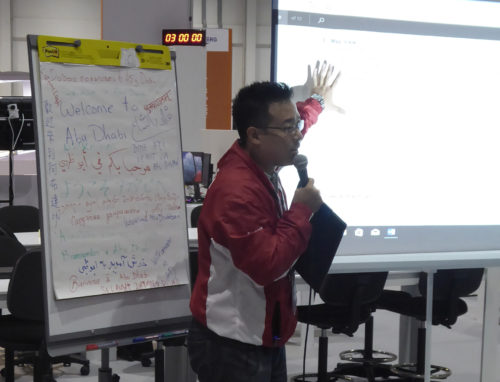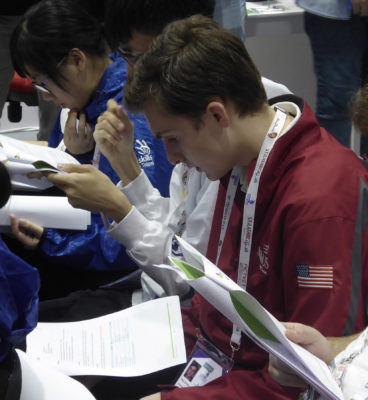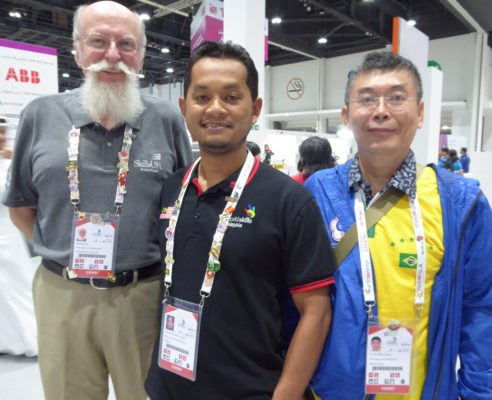Today was the second day of the competition (Monday). Yes, I am running a bit behind in my daily updates. There are many activities (for both experts and competitors). The focus throughout the day was on server side development. In the morning, competitors developed an API (which was reviewed by the experts using the Chrome extension Postman). These modules were the longest duration for the competition.
As happens during each day, we have an initial orientation (where the lead expert discusses the modules for the day). This takes roughly 30 minutes. Competitors may not ask questions during this phase. They are provided a printed handout describing the projects in detail. Media files and some supporting files are also provided on a shared drive on the server. Here is my colleague Hantze Sudarma (from Indonesia) explaining the server side projects to competitors. You will note there is also a countdown timer in the background. This particular module was set for 3 hours.
Once I return the the US, I will provide links to all the projects and challenge readers of this weblog to see if they can complete any of the projects in the time allotted.
Here is a photo of Riley examining the projects for the day. As you may suspect, these days are intense for competitors. As I have mentioned many times to Riley, time is not your friend during the competition. It is important to identify a plan to complete the majority of the project (and focus on the parts which will generate the most points).
After the presentation, there is a 15 minute period when competitor can discuss the project with their compatriot expert. We can not share any notes, all communication must be verbal. When this time concludes, competitors begin work on the projects (for the morning session). While competitors are working on the project, our team (Rasul Aninipot Pundogar [from the Philippines], Chorng-Shiuh Koong (a.k.a. Kevin) from Chinese Taipei, and I) met to discuss how we planned to assess each of these projects. We are assigned a few items to assess each day. The same is true for the other teams of experts. Here is a snapshot our our marking team.
At the end of the competition, roughly 8,600 data points (assessments) have been collected. This is a very thorough review and all experts have to trust everyone to be fair in their evaluations. There are both measurement and judgement criteria. Measurement criteria are evaluated in a binary fashion (either full points are assigned or no points are assigned). Judgement criteria are ranked on a scale from 0 to 3. 1 represents industry standard. 3 is for exceptional work.
There are separate rooms for marking. No cameras or phones are permitted in these rooms (experts do have a locker to store items). We use both desktop computers and tablets to enter the actual scores.
After all marking has been completed for a specific project, we are asked to review our competitor scores and to then sign off that we agree with the results. Again, the emphasis is on transparency and consistency throughout the competition.
I hope this gives readers a clearer understanding of the process and how involved both experts and competitors are in making certain this is a fair and equal competition (and all competitors have the ability to succeed based on their own merits).
As always, I look forward to your comments.
Updated November 14, 2017
I provide a link to the server side work order. You have 6 hours to complete both parts (3 hours for part 1 and 3 hours for part 2). Again, could you complete these challenges? Could you do so in the limited time available?




